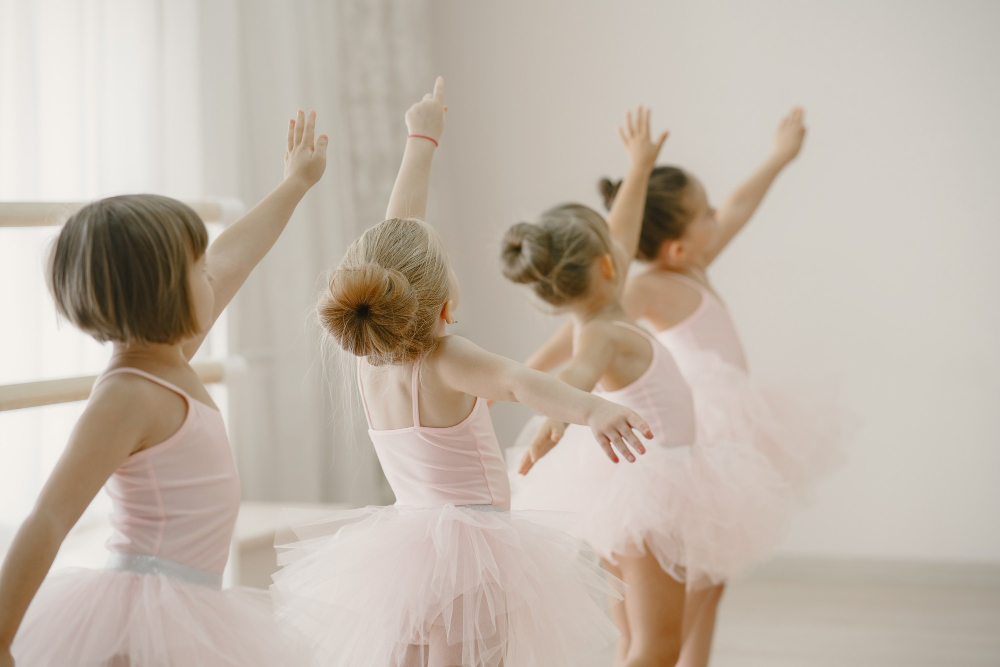How to Keep Your Child Motivated in Ballet Classes

Starting ballet classes can be an exciting adventure for children, but maintaining their enthusiasm and commitment over time presents unique challenges. Many parents watch their young dancers begin with boundless energy and dreams of becoming the next prima ballerina, only to see that initial spark fade after a few months of classes.
The journey of dance education requires patience, understanding, and strategic support from parents. Unlike other activities where progress might be immediately visible, ballet demands dedication to master fundamental techniques that can seem repetitive to young minds. Children may become discouraged when they struggle with seemingly simple positions or when they compare themselves to more experienced dancers.
Understanding how to nurture your child's love for ballet while helping them push through difficult moments can make the difference between a lifelong passion and a short-lived hobby. The key lies in recognizing that motivation fluctuates naturally and having tools ready to reignite your child's enthusiasm when needed.
Set Realistic Expectations Together
Children often enter ballet classes with grand visions inspired by movies or performances they've seen. While these dreams are beautiful, they can also create unrealistic expectations that lead to disappointment. Sit down with your child and discuss what they can realistically expect to learn and achieve in their first year of ballet classes.
Help them understand that professional dancers spend years perfecting basic positions before moving to advanced techniques. Frame progress in terms they can understand: just like learning to read starts with individual letters before forming words and sentences, ballet begins with mastering fundamental positions and movements.
Create short-term, achievable goals that build confidence. Instead of focusing on performing en pointe, celebrate when your child masters a proper plié or remembers an entire barre sequence. These smaller victories create momentum and demonstrate tangible progress.
Create a Supportive Practice Environment at Home
Regular practice outside of class reinforces learning and helps children feel more confident during lessons. Designate a space in your home where your child can practice safely, even if it's just a cleared area in the living room. A portable barre or even a sturdy chair can provide support for basic exercises.
Make practice time enjoyable rather than another chore. Play classical music that matches what they're learning in class, and occasionally join them for simple stretches or positions. Your participation shows that you value their commitment and creates positive associations with practice time.
Keep practice sessions short and focused, especially for younger children. Ten to fifteen minutes of concentrated practice often proves more beneficial than longer sessions where attention wanes. Allow your child to choose which skills they want to work on, giving them ownership over their improvement.
Address Common Challenges Head-On
Every young dancer faces moments of frustration when progress feels slow or when they struggle with particular techniques. Rather than dismissing these feelings, acknowledge them and help your child work through challenges constructively.
When your child expresses frustration about not being able to do something "perfectly," remind them that even professional dancers continue learning throughout their careers. Share stories of famous dancers who overcame difficulties or started later than others, emphasizing that persistence matters more than immediate perfection.
If your child complains about soreness or fatigue, teach them to distinguish between normal muscle development and actual injury. Explain how dancers' bodies become stronger and more flexible over time, and celebrate these physical improvements as signs of progress.
Connect Ballet to Their Interests
Children stay more engaged when they can connect new activities to things they already love. If your child enjoys storytelling, explore the narratives behind famous ballets like "The Nutcracker" or "Swan Lake." Many children find renewed interest when they understand the characters and stories they might someday portray.
For children who love music, introduce them to different composers and help them identify the emotions each piece conveys through movement. Art-loving children might enjoy learning about costume design, stage makeup, or the visual elements that make performances magical.
Connect ballet to other activities your child enjoys. If they love sports, explain how ballet improves balance, coordination, and strength that benefit athletes. Creative children might appreciate how ballet combines artistic expression with physical skill.
Build Connections Within the Dance Community
Feeling part of a community significantly impacts a child's desire to continue with ballet classes. Encourage friendships with other students and create opportunities for social connections beyond regular class time.
Attend recitals, competitions, and performances featuring students from your child's studio or other local dance schools. Seeing peers perform can inspire your child and help them visualize their own potential growth. These events also demonstrate the broader dance community they're joining.
Consider organizing informal gatherings with other dance families, such as watching ballet movies together or attending professional performances as a group. These shared experiences create positive memories associated with dance and strengthen your child's connection to the art form.
Celebrate Progress and Milestones
Recognition fuels motivation, especially when it acknowledges effort alongside achievement. Create a system for celebrating your child's progress that goes beyond just technical improvements. Acknowledge improvements in focus, dedication to practice, or helping classmates.
Document your child's journey through photos, videos, or a dance journal where they can record what they learned each week. Looking back at earlier recordings can help children see how much they've improved, even when current progress feels slow.
Consider creating special traditions around dance milestones, such as a favorite dinner after their first recital or a new piece of dance gear when they master a challenging skill. These celebrations reinforce that their hard work matters and deserves recognition.
Know When to Seek Professional Guidance
Sometimes children need additional support beyond what parents can provide. If your child consistently struggles with motivation despite your efforts, consider speaking with their ballet instructor about strategies specific to your child's learning style and personality.
Professional dance teachers often have extensive experience helping students through motivation challenges and can offer insights into whether your child might benefit from different class levels, teaching approaches, or additional support. They might suggest private lessons to address specific technical issues or recommend ways to modify goals to better match your child's current abilities.
Finding the Right Support for Your Child's Ballet Journey
Maintaining your child's commitment to ballet classes requires patience, creativity, and sometimes professional guidance. The most successful young dancers have support systems that celebrate their efforts, help them work through challenges, and connect them to the broader world of dance.
Remember that every child's dance journey looks different, and progress rarely follows a straight line. Some children advance quickly in technique while others excel in artistry and expression. Focus on your individual child's growth rather than comparing them to peers, and maintain open communication about their experiences and feelings toward dance.
If you need professional ballet classes in Apopka, FL, contact 3D Motion Dance Studio today to sign up for a free trial class. Their experienced instructors understand how to nurture young dancers' passion while building strong technical foundations that support lifelong enjoyment of ballet.
